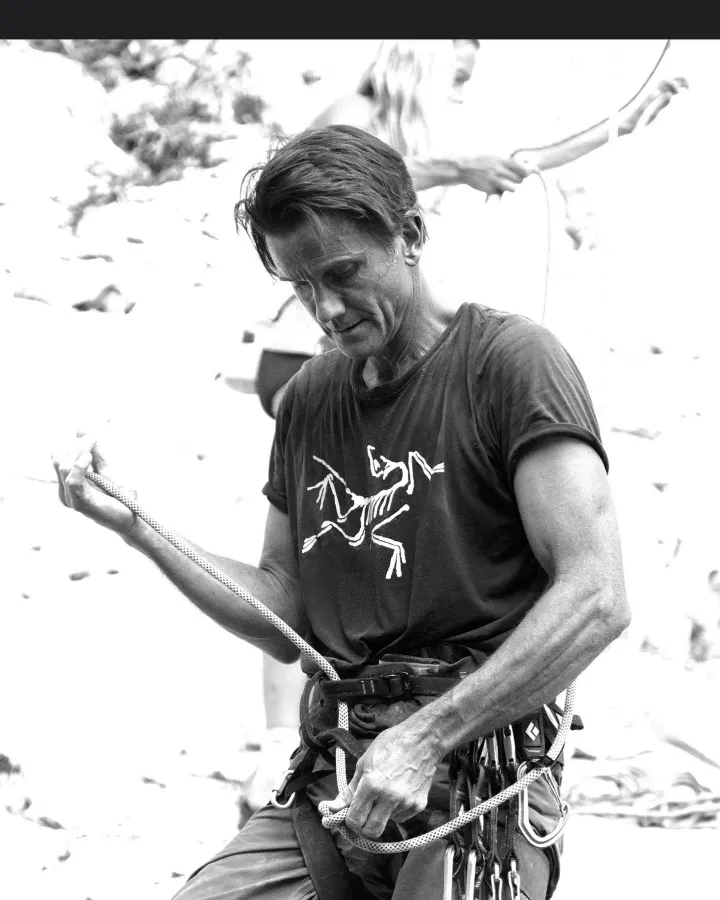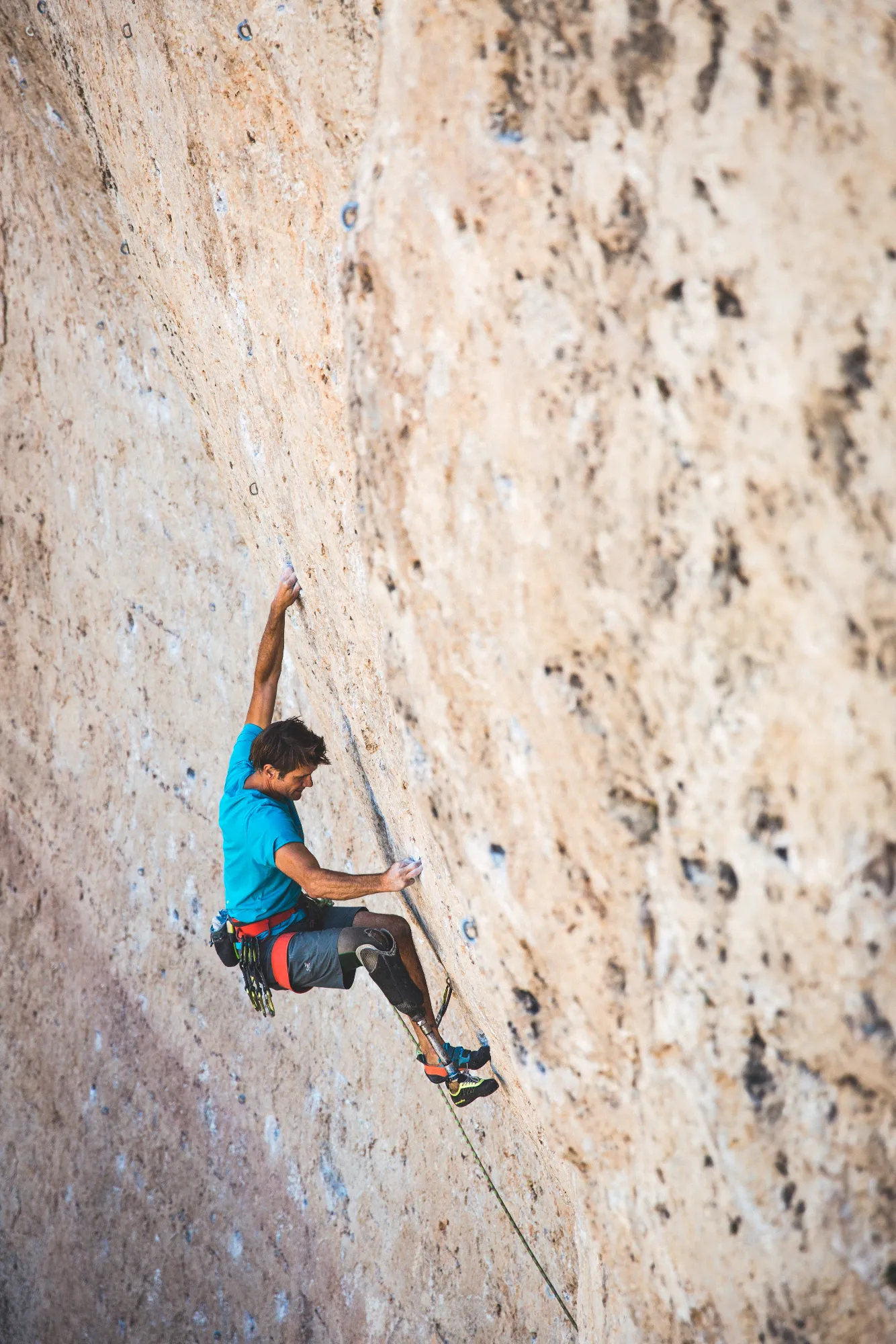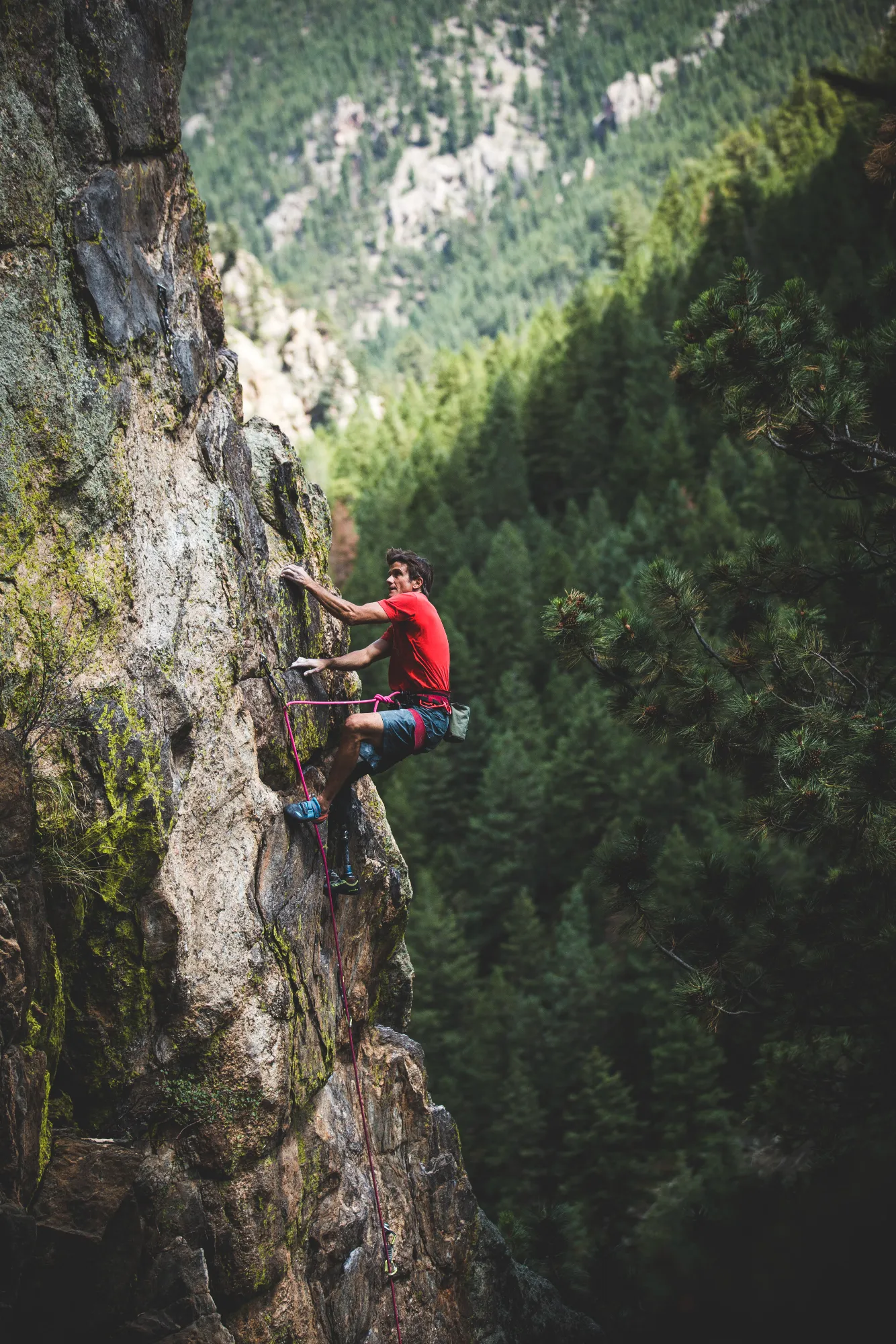In 2002, Craig’s life changed forever when he accidentally dropped 100 feet on a climb. He is now a motivational speaker and continues to be a climber. Find him at www.craigdemartino.com or on Instagram @craigdem
Your journey as a climber took an unexpected turn with a life-altering fall. How did you find the strength to adapt and continue climbing?
The accident in 2002 changed everything in my life, from the simple to the complex, every facet of my life was changed forever. As I went through the recovery process, I understood that my life was never going to be the same. The accident took so much from me and after the amputation of my right leg, I had a moment when I had to decide how my life was going to look.
I knew I didn’t want to just exist. I wanted to have a life of adventure, and even though I was injured climbing, I wanted to go back to the climbing lifestyle I loved. Together with my wife Cyndy, we began to move towards that goal. Not only did we not know what I could do, but we wanted to explore how I could be a climber again plus a dad, husband, and person with a good quality of life. I was really lucky for a great support network who loved me and helped me to move past the accident. My wife and I figured out how I could be active again even with a fused lumbar 1-4, a fused neck at C5/6 and a prosthetic leg. Gear manufacturers came to help, I was given opportunities to explore different ways an amputee foot could be used for climbing.
As an amputee, you have defied the odds and pushed your limits in the climbing world. What has been the driving force behind your determination and resilience?
Climbing is pretty much the only thing I’ve done my whole life. Going back to it just made sense to me but there were no tools to help me as an amputee climber. I was fortunate to work with a prosthetic maker, Quorum Prosthetics in Colorado, to make a socket that could take the abuse of climbing. I also worked with climbing shoe company Evolv, to design a foot that would allow me to climb a wide array of terrain. I was able to focus on climbing movement again and quickly realized that the movement of climbing made me feel better, even after the accident that had taken so much from me. That simple realization is what allowed me to climb bigger and bigger things and be able to set records and win competitions over the years. The driver in all this was my desire to return to some form of the life I had before, one of being outside, climbing and exploring. I just needed to figure out how my new body would fit into that.



You’ve turned adversity into motivation – how does your experience as a disabled climber influence your work as a motivational speaker and author? What message do you have for others facing challenges?
When I speak to groups or teach clinics on climbing, I always say, “Whatever you are going through now, be it good or bad, it’s a fluid situation.” Even now, 20 years after I was hurt, I’m still seeing that my life changes all the time. Some days are good, while others I have a lot of chronic pain from my injuries. That’s just a fact of life after such heavy trauma. But I know that tomorrow will be different; it may be worse, but usually it’s better and I can do the things I want to do. People need to remember that the life they are living day to day will change all the time. It’s like water, moving and flowing, changing all the time. We, as trauma survivors, need to embrace that.
I think most people have doubts about what they can do after an accident, trauma or when growing up with congenital problems. The best thing to do is be curious about what you can do in life. Nothing will be the same, but a lot of things will be better if you’re willing to explore and see what fits you. I work with a non-profit based in Denver called Adaptive Adventures, who use eight different sports like climbing, skiing, paddling and biking to get people with physical disabilities active again. Maybe your thing won’t be climbing, but we can help you find a new passion and be part of a community that supports you and enables you to be an athlete.
Climbing is demanding, often seen as a sport that requires a complete set of limbs. You’ve redefined what is possible. What advice do you have for people doubting their abilities due to physical limitations?
Everyone who goes through these types of events has doubt and fear, myself included. When I first saw myself in a mirror after my amputation it was shocking. I didn’t think I’d be able to do anything and that scared me to my core. The thing to remember is this is a long process, and you have to settle into it. Take your time and let the process happen around you, shape you, and that will allow you to control those doubts and fears.
Your determination and courage have inspired people around the world. Can you share a time when you witnessed the impact of your message on someone facing hardships?
At one of my clinics in Colorado, where I’m based, a man in a wheelchair came to watch how adaptive climbing worked. I invited him to climb but he felt he couldn’t since he was in a chair. I explained how he could, and with a bit of fear he decided to try. He climbed one route that night and what that 40 feet of climbing did was shift his perspective. He went from a person who thought he couldn’t, to an athlete who knew he could. He just needed some adaptation and help. He returned to skiing, camping and a life of adventure, thanks to his willingness to trust me and try. He still climbs with me when I’m in town teaching and credits climbing for bringing him back to being whole. That never gets old!
Your book, After the Fall, delves into your struggles and triumphs. What message did you want to convey and how did you hope it would resonate with others struggling with their own setbacks?
Setbacks come with the new normal we find ourselves in after heavy trauma. I think you have to remember it’s fluid and changing even as you are dealing with a setback. I’ve had years of injuries, bad luck and chronic pain but I try to remember they are not the rest of my life. They are simply put, a fraction of my time here on earth.
What advice would you offer to people searching for a sense of purpose and strength in difficult times?
Even in your difficult times remember there is always someone who is worse off. One of the best things to happen to me through the clinics I teach is to see that injuries come in many packages. Don’t get too focused on the downs or the highs, try to find that middle ground where you can exist in a life of quality and fulfillment. Don’t try to solve all the problems at once, it’s a process and really, you can only do one thing at a time. Let the process happen even if you don’t see the end; it’s happening, and you have to have faith it’s working.
I saw a quote online, “Life is 10% circumstances and 90% my reaction.” To me, it embodies the idea that things are always changing and it’s up to me to not be too caught up in the circumstances. If I can react positively, even the worst things can be made better.
What are some of your most memorable accomplishments?
I’ve been fortunate to achieve some fun things:
- First amputee to climb Yosemites El Capitan in under 24 hours
- First all disabled ascent of El Capitan
- Speed record holder on the nose of El Capitan, 13 hours
- Two time National Champion
- Two time bronze medal winner in Adaptive Worlds
See Craig in action here:
